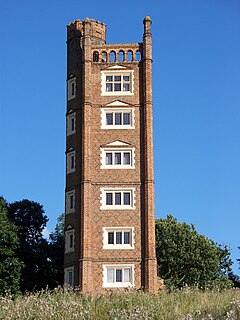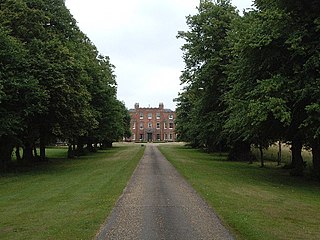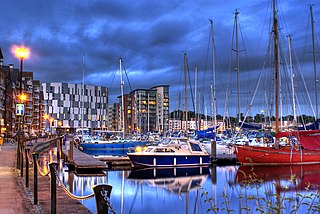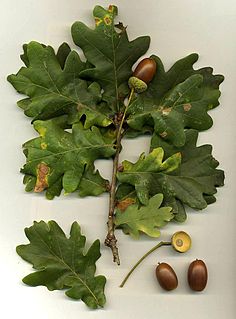
Ipswich is a historic county town in Suffolk, England, located in East Anglia about 66 miles (106 km) north east of London. The town has been continuously occupied since the Saxon period, and its port has been one of England's most important for the whole of its history. The modern name is derived from the medieval name Gippeswic, likely taken either from an Old Saxon personal name or from an earlier name of the Orwell estuary. It has also been known as Gyppewicus and Yppswyche.

The River Orwell flows through the county of Suffolk in England. Its source river, above the tidal limit at Stoke Bridge, is known as the River Gipping. It broadens into an estuary at Ipswich where the Ipswich dock has operated since the 7th century and then flows into the North Sea at Felixstowe the UK's largest container port after joining with the River Stour at Shotley forming Harwich harbour.

The Orwell Bridge is a concrete box girder bridge just south of Ipswich in Suffolk, England. Opened to road traffic in 1982, the bridge carries the A14 road over the River Orwell.

Nacton is a civil parish in the East Suffolk district of Suffolk, England, taking its name from the village within it. The parish is bounded by the neighbouring parishes of Levington to the east and Bucklesham in the north. It is located between the towns of Ipswich and Felixstowe.

Freston Tower is a six-storey red brick folly south of Ipswich, Suffolk in the village of Freston. It stands on the banks of the River Orwell.
George Tomline, referred to as Colonel Tomline, was an English politician who served as Member of Parliament (MP) for various constituencies. He was the son of William Edward Tomline and grandson of George Pretyman Tomline.

Burstall is a village and civil parish in Suffolk, England. Located around 4 miles (6 km) west of Ipswich, it is part of Babergh district. The parish includes the hamlet of Burstallhill. Recorded in the Domesday Book as Burgestala / Burghestala.

Broke Hall is an English country house at Nacton, near Ipswich, Suffolk. It overlooks the River Orwell, opposite Pin Mill. The gardens were landscaped by Humphry Repton in 1794, and the house is Grade II* listed.

Woolverstone is a small village and civil parish in Suffolk, England located on the Shotley peninsula. It is situated about 6.4 km (4.0 mi) south of Ipswich, near the southern shore of the River Orwell. In 2005 it had a population of 240, increasing to 265 at the 2011 census.

The Ipswich Waterfront, is the area of land around the marina in the town of Ipswich, Suffolk. The dock was constructed in 1842 and was a hive of industry up until the 1970s, at the time of completion, the dock was known as 'the biggest enclosed dock in the kingdom'. Since 1995, the area has undergone major regeneration which has completely transformed the area. The area is now characterised by its mix of postmodern and classical architecture which houses commerce and residential apartments. The area also includes fine dining restaurants, cafés, pubs, a boutique hotel, and the main campus of the regions university, the University of Suffolk.
The Shotley Peninsula is a rural area east of the A137 Ipswich-Colchester road located between the rivers Stour and Orwell in Suffolk, England. The peninsula is named after the settlements of Shotley and Shotley Gate which are situated near its south-eastern tip. Other villages on the peninsula include Chelmondiston, Erwarton (Arwarton), Freston, Harkstead, Holbrook, Stutton, Tattingstone, Wherstead and Woolverstone.

Pin Mill is a hamlet on the south bank of the tidal River Orwell, located on the outskirts of the village of Chelmondiston on the Shotley peninsula, south Suffolk. It lies within the Suffolk Coast and Heaths Area of Outstanding Natural Beauty and is a designated Conservation Area. Pin Mill is now generally known for the historic Butt & Oyster public house and for sailing.

The Orwell Lady is a purpose built river cruiser currently operating 13 miles of the river Orwell and sails from Ipswich, England. The Orwell lady is 57 ft (17.13m) long and 14 ft (4.26m) in the beam, weighs 42 tonnes, and carries 118 passengers plus crew. The Orwell Lady sails from Ipswich dock and sails to the end of the Orwell at the Port of Felixstowe allowing for views of Shotley harbour and the historic town of Harwich. The boat has a fully functioning bar and panoramic views which has helped secure the boat as a popular tourist attraction in Ipswich. In recent years the boat has become one of the most popular river cruises in East Anglia.
PS Ipswich was a passenger vessel built for the Great Eastern Railway in 1864.
PS Stour was a passenger vessel built for the Great Eastern Railway in 1864.
PS Orwell was a passenger vessel built for the Great Eastern Railway in 1873.

Orwell Estuary is a 1,335.7 hectare biological Site of Special Scientific Interest which stretches along the River Orwell and its banks between Felixstowe and Ipswich in Suffolk. It is part of the Stour and Orwell Estuaries Ramsar site internationally important wetland site and Special Protection Area under the European Union Directive on the Conservation of Wild Birds. It is also in the Suffolk Coast and Heaths Area of Outstanding Natural Beauty.

Pipers Vale is a 19.7 hectare Local Nature Reserve on the southern outskirts of Ipswich in Suffolk. It is owned and managed by Ipswich Borough Council.

SB Lady Daphne is a wooden Thames sailing barge, built in Rochester, England in 1923. She was used to carry various cargoes such as bricks and Portland stone on the London River and along the English Channel. She is infamous for sailing unaided from The Lizard to Tresco in the Scilly Isles, and safety beaching herself in two feet of water on shelving sand.

Orwell Park School is a day and boarding preparatory school for boys and girls in the village of Nacton on the edge of Ipswich in the English county of Suffolk. Founded in 1868 in Lowestoft, the school currently accommodates around 300 boys and girls between the ages of 2½ and 13 years. It is a member of the IAPS.

















